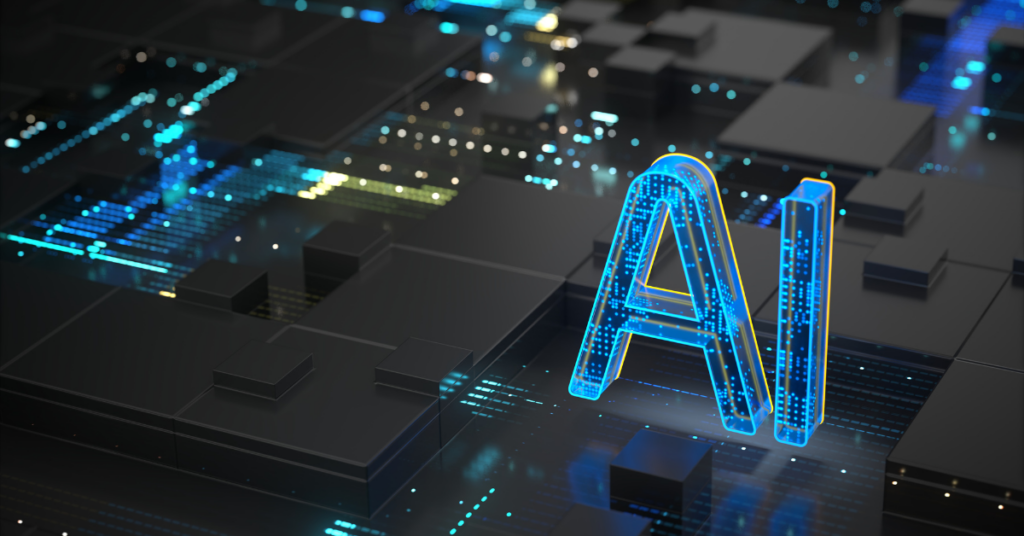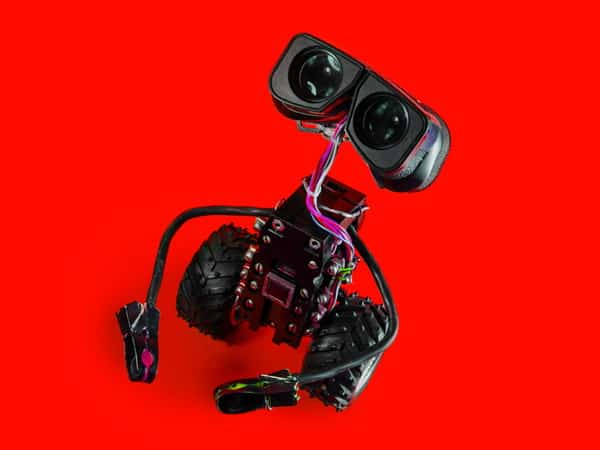Artificial intelligence trends include the rise of generative AI, the democratization of AI, and increased attention to ethics and compliance, eWeek reports.
Far from being a new field, AI is already several decades old and is showing rapid development. Impact-Site-Verification: 9fff8018-2a90-4003-9484-46fa7a2d8872 With the recent explosive growth of generative AI and AI-powered automation, the evolution here seems to be moving at double speed—or even faster.
Here’s an overview of some of the current trends in AI and how new technologies, capabilities, and use cases for AI will impact users—from the average consumer to the IT team of a global enterprise.
1. Generative AI is increasing its already high popularity
Over the past few months, generative AI has taken the tech world and the globe by storm, offering user-friendly AI models for generating text, images, audio, and other content. The generative AI arena is currently dominated by OpenAI thanks to solutions like GPT-4 and ChatGPT, as well as a close partnership with Microsoft, but other competitors are quickly catching up: Google, for example, is developing the capabilities of Google Bard and is quickly gaining momentum.
Dozens of startups are already vying for specific niche markets and enterprise use cases for generative AI, such as drug discovery/development and risk management, and it is clear that many more will enter this market in the coming months.
However, it is important to note that most of the companies working in the field of generative AI are building on or otherwise relying on third-party core models rather than building their own infrastructure. In the near future, we can expect the generative AI market to begin to consolidate, with leaders such as Google, Microsoft, OpenAI, possibly Amazon, and others vying to be the preferred supplier of both core models and AI assistant tools.
In addition, expect greater participation from infrastructure, hardware and compute providers such as Nvidia and Intel; the chips and GPUs they provide are limited by the available profitable resources needed to power generative AI models at scale.
2. Embedded and UX-centric AI
A number of AI companies and startups offer models that can be further developed and built into third-party systems. Such models allow companies to build AI-powered search, assistive, and other user experience (UX) services—from internal databases for employees to search panels and on-site knowledge bases for external users. Search leaders such as Microsoft and Google are also actively working on implementing effective AI assistants into their search engines.
As UX-focused AI evolves, AI companies will likely place greater emphasis on their global presence and multilingual capabilities. Some AI tools currently don’t work outside of English-language queries. However, a number of companies are now developing AI model training processes and global data sets to enable natural language processing and understanding across dozens of languages. An example of such efforts is Cohere, the generative AI unicorn behind products like Embed, which can extract and translate text in more than 100 languages.
3. Increased compliance and ethical requirements
AI tools continue to evolve and penetrate into new areas of our lives, relying on huge amounts of personal and confidential data to work effectively. However, companies and individuals alike are increasingly concerned about what data is collected, how it is used, and whether it is properly protected during use and disposed of after the job is completed.
Because of this, AI companies are now looking to make data collection and model training processes more transparent so that users know how their data is being used. Many customers are also pushing for explainable AI. We are talking about tools and documentation that clearly explain how to optimize the model’s performance and better analyze or tune its behavior.
In response to user concerns, companies like OpenAI are trying to more clearly delineate their methodologies and internal practices for model training and data security. These expectations will only increase, especially as various technology leaders, countries and individual consumers look to these providers and question their overall commitments to compliance, data management, security and ethical use.
Speaking of ethical use, technology experts and environmentalists are beginning to discuss the environmental impact of the latest AI models. Many of these tools require a huge amount of computation, both for initial training and for later use. High energy consumption leaves a significant carbon footprint that dwarfs the environmental impact of most other modern technologies.
When generative AI tools and other modern models are used on a small scale, this is not an issue, but with the way most businesses choose to use these models, the environmental impacts must be addressed soon before they get out of control.
As proposed AI regulations, such as Europe’s AI Act, advance, AI companies will need to justify the tools they create and what they do, as well as the materials they use, the energy they consume, and the safety guarantees they provide. the compliance they establish to protect consumers.
4. Continued democratization of AI and widespread access to it
Enterprises typically have huge volumes of data to process, but lack the resources to process complex data in multiple formats.
Additionally, with widespread talent and skills shortages, many companies do not have sufficient skilled personnel to collect, interpret, analyze and apply business intelligence and data to operational processes across the organization.
To combat this problem, many companies are creating or investing in low-code/no-code technologies, including user-friendly AI tools that can sift through and interpret large volumes of structured, unstructured, and semi-structured data. These new tools are becoming increasingly important for democratizing business intelligence, decision making, and data analysis.
Companies like DataRobot, H2O.ai, Sisu Data, Tellius, and others are now developing AI-powered analytics and decision-making solutions that lower the barrier to entry for non-data science professionals. These solutions help organizations expand their data analytics capabilities and help new users better understand and contextualize business data.
While many AI and data analytics companies are already making their solutions more accessible to less tech-savvy users, it will be interesting to see how more organizations embrace low-code/no-code to increase democratization. AI. Beyond making these tools easier to use, companies are also starting to attract new customers. To do this, they integrate AI-based intelligence into the tools they already use, including data lakes and databases, BI dashboards, and more.
5. New AI-based cybersecurity solutions
AI has been used in some cybersecurity solutions for several years now, and these tools are quickly becoming more popular as capabilities expand.
Network Detection and Response (NDR) and Advanced Detection and Response (XDR) vendors continue to add AI-based threat detection to their portfolios to help security teams identify and address issues such as signature-less attacks and automate various aspects of detection and response workflows.
Vulnerability management, pentesting, breach and attack simulation (BAS) tools are also beginning to rely heavily on AI to more realistically simulate advanced sustained attacks (APTs).
And with the rise of generative AI, a whole new breed of AI-powered security has emerged. Google, Microsoft, CrowdStrike, Cisco, SentinelOne, and many other companies are using generative AI to further advance intelligent threat detection, behavioral analysis, natural language querying, and security analytics.
Of course, AI-powered cybersecurity tools can be created and used by attackers, but security companies that choose to implement AI into their tools and workflows now are best positioned to combat these new threats.
6. Computer vision and hyperautomation in industry
Computer vision, a form of AI that allows computers to better understand data and scenarios based on images, has become a key factor in simplifying and automating modern manufacturing.
Manufacturing tasks currently being addressed by computer vision and related AI solutions include automated product defect detection, 3D modeling, risk management, product counting and packaging, predictive maintenance, and inventory management. The visual processing capabilities of computer vision tools allow them to handle, and in some cases exceed, human-level quality control tasks.
The latest multimodal AI models and robotics, which allow companies to use input images to produce detailed classifications, explanations and recommendations, have become especially important for hyper-automation in manufacturing. Based on the results of their work, users can either manually resolve detected problems or resort to robotic process automation (RPA) to correct errors based on rules.
For example, a multi-modal model could be trained to process an image of an aircraft propeller and quickly tell the user what kind of propeller it is, what defects affect its performance/safety and where they are located, and/or how to fix any detected problems. In some scenarios, these AI models are integrated with automated bots that can perform these corrections automatically.
Currently, AI models capable of handling this level of automation of production tasks are few in number, but more such solutions are likely to emerge to support and automate the quality control process.
How AI trends affect you and your business
AI solutions are changing rapidly, and with these changes come new opportunities to make AI relevant and accessible to new audiences. At the same time, there is growing concern not only about cybersecurity and ethics issues, but also because many workers believe these new tools will take away their jobs.
While the job market is likely to change as AI advances, it is less likely that job opportunities will decline and more likely that new opportunities will emerge.
Those companies and individuals that invest in AI training and certification will be in the most strategic position to be ready and able to use these new tools in a changing job market. The good news is that the growing emphasis on AI and data democratization is already lowering the barrier to entry—both in terms of skills and costs—for those looking to enhance their careers with AI knowledge.





